Today’s Current Affairs: 25th Nov 2023 for UPSC IAS exams, State PSC exams, SSC CGL, State SSC, RRB, Railways, Banking Exam & IBPS, etc
Table of Contents
Farlowichnus rapidus : New Species Of Dinosaur
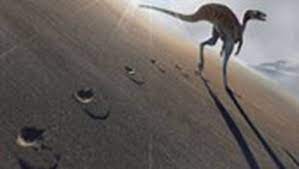
Brazil’s geological service announced a new species of dinosaur, Farlowichnus rapidus, that lived in the desert during the early Cretaceous period.
- Farlowichnus rapidus new species of dinosaur was a small carnivorous animal about the size of a modern-day seriema bird, or about 60-90 cm (2-3 feet) tall.
- It was a very fast reptile that ran across the ancient dunes.
- The fossilized dinosaur “trackways”, were first found in the 1980s by Italian priest and palaeontologist Giuseppe Leonardi
- It lived during the early Cretaceous period.
- The Cretaceous is the longest period of the Phanerozoic Eon.
- The Cretaceous Period began with Earth’s land assembled essentially into two continents, Laurasia in the north and Gondwana in the south.
- These were almost completely separated by the equatorial Tethys seaway, and the various segments of Laurasia and Gondwana had already started to rift apart.
Credit Guarantee Trust For Micro And Small Enterprises (CGTMSE) Scheme:
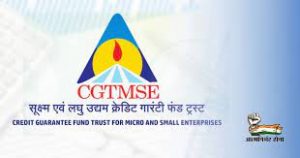
The Credit Guarantee Trust for Micro and Small Enterprises (CGTMSE) Scheme has approved a credit guarantee of Rs. 1 lakh crore in just 7 months of the current financial year 2023-24.
- Credit Guarantee Trust for Micro and Small Enterprises (CGTMSE) Scheme was launched in 2000.
- The corpus of CGTMSE is being contributed by the Government of India and the Small Industries Development Bank of India (SIDBI) in the ratio of 4:1.
- Credit Guarantee Fund Trust for Micro and Small Enterprises (CGTMSE) is jointly set up by the Ministry of Micro, Small, & Medium Enterprises (MSME), the Government of India, and the Small Industries Development Bank of India (SIDBI) to catalyse the flow of institutional credit to Micro & Small Enterprises (MSEs).
- CGTMSE has been instrumental in providing guarantee cover to collateral and/or third-party guarantee-free credit facilities extended by eligible Member Lending Institution [MLIs] to MSEs.
- Small Industries Development Bank of India was established under an Act of Parliament in 1990.
- It is the Principal Financial Institution engaged in the promotion, financing & development of the Micro, Small and Medium Enterprises (MSMEs) sector and the coordination of the functions of the various institutions engaged in similar activities.
- The main objective of SIDBI is to offer loans (both direct and indirect) to MSMEs to help address the development and financial gaps in the ecosystem of MSMEs.
Exercise SURYA KIRAN: 17th Edition
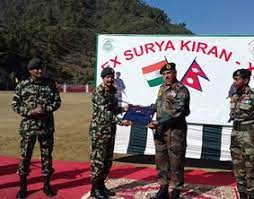
The 17th edition of Joint Military Exercise SURYA KIRAN will be conducted in Pithoragarh, Uttarakhand, from November 24th to December 7th, 2023.
- Exercise SURYA KIRAN is a joint military exercise between the Indian army and the Nepali army.
- It is an annual event and is conducted alternately in the two countries.
- The Indian Army contingent, comprising 354 personnel, is being led by a battalion from the Kumaon Regiment. The Nepal Army contingent is represented by the Tara Dal Battalion.
- The aim of the exercise is to enhance interoperability in jungle warfare, counter-terrorism operations in mountainous terrain, humanitarian assistance, and disaster relief under the United Nations Charter on peacekeeping operations.
- The exercise will focus on the employment of drones and counter-drone measures, medical training, aviation aspects and environment conservation.
- The exercise will provide a platform for soldiers from India and Nepal to exchange ideas and experiences, share best practises, and foster a deeper understanding of each other’s operational procedures.
- This exercise signifies the strong bonds of friendship, trust, and common cultural linkages that exist between India and Nepal.
- It sets the stage for a productive and fruitful engagement, showcasing the unwavering commitment of both nations towards broader defence cooperation.
Deepfakes : Regulations
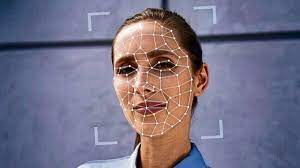
The Union Information Technology Minister recently said the government will form regulations to control the spread of deepfakes on social media platforms, terming them a “new threat to democracy.”
- Deepfakes are a compilation of artificial images and audio put together with machine-learning algorithms to spread misinformation and replace a real person’s appearance, voice, or both with similar artificial likenesses or voices.
- The term “deepfake” combines the deep learning concept with something fake.
- It can create people who do not exist, and it can fake real people saying and doing things they did not say or do.
- The origin of the word “deepfake” can be traced back to 2017, when a Reddit user with the username “deepfakes”, posted explicit videos of celebrities.
- They are created by machine learning models, which use neural networks to manipulate images and videos.
- To make a deepfake video of someone, a creator would first train a neural network on many hours of real video footage of the person to give it a realistic “understanding” of what he or she looks like from many angles and under different lighting.
- Then they’d combine the trained network with computer-graphics techniques to superimpose a copy of the person onto a different actor.
- Deepfake technology is now being used for nefarious purposes like scams and hoaxes, celebrity pornography, election manipulation, social engineering, automated disinformation attacks, identity theft, and financial fraud.
International Day For The Elimination Of Violence Against Women 2023:
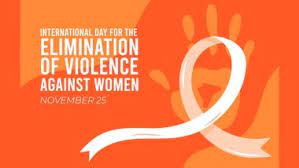
The International Day for the Elimination of Violence Against Women is observed worldwide on November 25 each year.
- International Day for the Elimination of Violence Against Women is observed annually on November 25.
- It is a United Nations (UN)-designated day marked to create awareness of the different types of violence faced by women, promoting advocacy, and creating better opportunities for women.
- This year’s theme, “UNITE! Invest to prevent violence against women and girls”, emphasises the need to fund prevention strategies proactively to stop gender-based violence.
- Since 1981, women’s rights activists have marked 25 November as a day against gender-based violence, paying homage to the Mirabal sisters—three Dominican political activists brutally murdered in 1960 by order of the country’s ruler, Rafael Trujillo (1930-1961).
- The UN General Assembly, on 20 December 1993, adopted the Declaration on the Elimination of Violence against Women, laying the groundwork for global efforts to eradicate such violence.
- On 7 February 2000, the General Assembly, through a resolution, officially designated 25 November as the International Day for the Elimination of Violence Against Women.
- This resolution urged governments, international organizations and NGOs to unite in organizing activities annually on this date, fostering public awareness and collective action to address and eliminate violence against women and girls worldwide.
Radio Galaxy : Discovery

Astronomers recently reported the discovery of 63 new giant radio galaxies.
- Radio Galaxies, also known as radio-luminous galaxies or radio-loud galaxies, are a particular type of active galaxy that emits more light at radio wavelengths than at visible wavelengths.
- These happen through the interaction between charged particles and strong magnetic fields related to supermassive black holes at the galaxies’ centre.
- Radio galaxies are driven by non-thermal emissions.
- They are much bigger than most of the other galaxies in the universe.
- The first radio galaxy to be discovered, and still the brightest, is called Cygnus A.
- There are two broad classes of radio galaxies:
- Core-halo radio galaxies:
- They exhibit radio emission from a region concentrated around the nucleus of the galaxy.
- The region of radio emission is comparable in size to the optically visible galaxy.
- Lobed radio galaxies:
- They display great lobes of radio emission extending, in some cases, for millions of light years beyond the optical part of the galaxy.
- Some radio galaxies have a single lobe, but more often, the lobes are double, arrayed on both sides of the optical galaxy.
- Core-halo radio galaxies:
Launch Of Two India-led Initiatives:
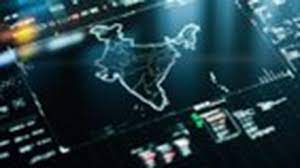
The Prime Minister of India announced the launch of two India-led initiatives: the Global Digital Public Infrastructure Repository and a Social Impact Fund.
Global Digital Public Infrastructure Repository:
- It is created by the Ministry of Electronics and Information Technology (MeitY).
- It is a comprehensive resource hub, pooling essential lessons and expertise from G20 members and guest nations.
- Its primary aim is to bridge the knowledge gap in the choices and methodologies required for the design, construction, deployment, and governance of DPIs.
- The GDPIR showcases the information in a standardised format from countries and organisations that have developed DPIs at scale, incorporating elements such as maturity scales, source codes (where available), and governance frameworks.
- Currently, the GDPIR features 54 DPIs from 16 countries.
- The DPIs from India that have been incorporated in the GDPIR are: Aadhaar, Unified Payments Interface (UPI), DigiLocker, Umang, eSanjeevani, API Setu, Co-WIN, Government e-marketplace, Diksha, E-Hospital, Poshan Tracker and Ayushman Bharat Digital Mission (ABDM)
Social Impact Fund (SIF):
- It is envisioned as a government-led multistakeholder initiative to fast-track DPI implementation in the global south.
- This fund will offer financial support to provide upstream technical and non-technical assistance to countries in developing DPI systems.
- It offers a platform for all relevant stakeholders, including other governments, international organizations, and philanthropic entities, to contribute to this fund and help accelerate the achievement of the Sustainable Development Goals (SDGs) in Low- and Middle-Income Countries (LMICs) through DPIs.
- India has pledged an initial commitment of $25 million.
AGNI Initiative:

The Central Council for Research in Ayurveda Sciences (CCRAS), Ministry of Ayush, launched the “Ayurveda Gyan Naipunya Initiative” (AGNI) for physicians practising in the field of Ayurveda.
- AGNI Initiative aim to provide a platform for Ayurveda practitioners to report their innovative practises and experiences in various disease conditions, along with promoting the culture of evidence-based practise among Ayurveda practitioners.
- Objectives of the Initiative:
- To promote the culture of reporting evidence-based practise among Ayurveda practitioners.
- To document the reported successful therapeutic regimens for various disease conditions involving single drug/ Formulation/ Procedures for the purpose of education and academics.
- To identify interested Ayurveda practitioners for collaboration in the creation of a database through applications and capacity building through training in research methods and good clinical practises.
- To undertake research for mainstreaming pragmatic practises through scientific validation and evidence-based appraisal
Rural Wages Data : RBI
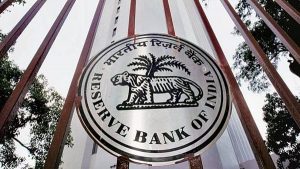
Data from the Reserve Bank of India highlights stark differences in rural wages across different states in India, showcasing significant disparities in earnings for farm and non-agricultural workers.
Highlights of the Rural Wages Data by RBI:
- During the fiscal year 2021-22, the rural economy faced challenges due to the Covid-19 pandemic affecting employment and income levels.
- In the fiscal year 2022-23, elevated inflation rates and increased interest rates significantly disrupted rural demand.
- These factors heavily impacted job opportunities and income stability in rural areas across the nation.
- Rural wages in Madhya Pradesh for agricultural and non-agricultural workers are significantly below the national average standing at Rs 229.2 and Rs 246.3 daily, respectively, impacting the livelihoods of rural families.
- Kerala boasts the highest wages across various sectors, with rural farm workers earning Rs 764.3 per day.
- In case of wages for rural construction workers too, Kerala and Madhya Pradesh stand at opposite ends of the spectrum at Rs 852.5 and Rs 278.7 daily, respectively.
- National Average Wages:
- Agricultural workers: Rs 345.7
- Non-agricultural workers: Rs 348
- Construction workers: Rs 393.3
- Despite some wage growth peaks in 2022-23, rural income prospects remained subdued, stagnating the real rural wage growth and indicating an incomplete recovery in the unorganized segment of the economy.
BDS Movement : Israel-Hamas Conflict

The ongoing Israel-Hamas conflict has once again brought the Boycott, Divestment, and Sanctions (BDS) movement into the spotlight, as it urges the boycott of major multinational companies.
- The Boycott, Divestment, and Sanctions (BDS) movement, born in 2005 from the collaboration of over 170 Palestinian groups, aims to rally global support for the rights of Palestinian people.
- Drawing inspiration from the successful South African anti-apartheid movement, it seeks nonviolent means to pressure Israel into complying with international law.
- It utilizes nonviolent methods to pressure Israel into adhering to international law, focusing on ending occupation and colonization, equality for Palestinian citizens, and the rights of Palestinian refugees as stipulated in UN Resolution 194.
- The resolution stated that refugees wishing to return to their homes should be permitted, and that compensation should be paid for the property of those choosing not to return.
Karmayogi Bharat : First Anniversary
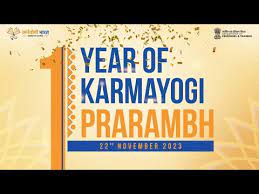
Karmayogi Bharat, launched last year, celebrated the first anniversary of Karmayogi Prarambh, an online orientation program on the iGOT Karmayogi Platform for government appointees recruited through Rozgar Melas.
- The program, consisting of eight curated courses, aims to help new government employees acclimatize to policies and transition smoothly into their roles.
- The iGOT Karmayogi platform is a comprehensive online learning portal for capacity-building among government officials, with over 26 lakh learners currently registered and access to 815+ courses.
- The Karmayogi Prarambh courses cover topics such as Code of Conduct for Government Employees, Prevention of Sexual Harassment of Women in the Workplace, Understanding Motivation, Self-Leadership, Stress Management, Effective Communication, MS Word for Beginners, and MS Excel for Beginners.
Commission On Social Connection : WHO
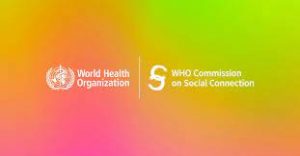
The World Health Organization (WHO) has launched a Commission on Social Connection, co-chaired by U.S. Surgeon General Dr. Vivek Murthy and African Union Youth Envoy Chido Mpemba.
- Commission on Social Connection (2024–2026) is a 3-year initiative to address loneliness as a global health threat. The Commission consists of 11 policy-makers and advocates.
- It aims to analyse the role of social connection in health, well-being, economic progress, social development, and innovation.
- The Commission seeks to define a global agenda on social connection, raise awareness, and collaborate on evidence-based solutions, with a focus on the impact of loneliness across various age groups and income levels.




